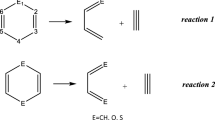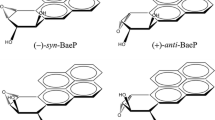Abstract
The conventional view that the σCC and σCH bonds in alkanes and unsaturated hydrocarbons are so highly localized that their non-steric interactions are negligible is scrutinized by the block-localized wavefunction (BLW) method. Even molecules considered conventionally to be “strain free” and “unperturbed” have surprisingly large and quite significant total σ-BLW-delocalization energies (DEs) due to their geminal and vicinal hyperconjugative interactions. Thus, the computed BLW-DEs (in kcal mol−1) for the antiperiplanar conformations of the n-alkanes (CNH2N+2, N = 1-10) range from 11.6 for ethane to 82.2 for n-decane and are 50.9 for cyclohexane and 91.0 for adamantane. Although σ-electron delocalization in unsaturated hydrocarbons usually is ignored, the σ-BLW-DEs (in kcal mol−1) are substantial, as exemplified by D 2h ethylene (9.0), triplet D 2d ethylene (16.4), allene (19.3), butadiene (19.0), hexatriene (28.3), benzene (28.1), and cyclobutadiene (21.1). While each individual geminal and vicinal hyperconjugative interaction between hydrocarbon σ-bonding and σ-antibonding orbitals tends to be smaller than an individual π conjugative interaction (e.g., 10.2 kcal mol−1 in anti-1,3-butadiene, the presence of many σ-hyperconjugative interactions (e.g., a total of 12 in anti-1,3-butadiene, see text), result in substantial total σ-stabilization energies (e.g., 19.0 kcal mol−1 for butadiene), which may surpass those from the π interactions. Although large in magnitude, σ-electron delocalization energies often are obscured by cancellation when two hydrocarbons are compared. Rather than being strain-free, cyclohexane, adamantane, and diamantane suffer from their increasing number of intramolecular 1,4-C…C repulsions resulting in elongated C–C bond lengths and reduced σ-hyperconjugation, compared to the (skew-free) antiperiplanar n-alkane conformers. Instead of being inconsequential, σ-bond interactions are important and merit consideration.







Similar content being viewed by others
Notes
Cf. Reference [23]. According to the definition given there, “gauche” is synonymous with a synclinal alignment of groups attached to adjacent atoms.
References
Lewis GN (1916) J Am Chem Soc 38:762–785
Thiel J (1899) J Ann Chem 306:87–142
Mulliken RS (1939) J Chem Phys 7:339–352
Wu JI, Schleyer P v R (2013) Pure Appl Chem 85:921–940
Inagaki S, Ishitani Y, Kakefu T (1994) J Am Chem Soc 116:5954–5958
Mo Y, Gao J (2007) Acc Chem Res 40:113–119
Pophristic V, Goodman L (2001) Nature 411:565–568
Bickelhaupt FM, Baerends EJ (2003) Angew Chem Int Ed 42:4183–4188
Mo Y, Wu W, Song L, Lin M, Zhang Q, Gao J (2004) Angew Chem Int Ed 43:1986–1990
Weinhold F (2003) Angew Chem Int Ed 42:4188–4194
McKee WC, Schleyer P v R (2013) J Am Chem Soc 135:13008–13014
Reed AE, Curtiss LA, Weinhold F (1988) Chem Rev 88:899–926
Mo Y, Peyerimhoff SD (1998) J Chem Phys 109:1687–1697
Mo Y, Song L, Lin Y (2007) J Phys Chem A 111:8291–8301
Cappel D, Tullmann S, Krapp A, Frenking G (2005) Angew Chem Int Ed 44:3617–3620
Fernández I, Frenking G (2006) Chem Eur J 12:3617–3629
Hopffgarten MV, Frenking G (2012) For a recent review on the energy decomposition analysis (EDA) method. WIREs Comput Mol Sci 2:43–62
Cooper DL (2002) Theoretical and computational chemistry. Elsevier, Amsterdam
Gallup GA (2002) Valence bond methods: theory and applications. Cambridge University Press, New York
Shaik SS, Hiberty PC (2008) A chemist’s guide to valence bond theory. Wiley, Hoboken, NJ
Gleicher GL, Schleyer P v R (1967) J Am Chem Soc 89:582–593
Allinger NL, Hirsch JA, Miller MA, Tyminski IJ, Van-Catledge FA (1968) J Am Chem Soc 90:1199–1210
Schleyer P v R, Williams JE, Blanchard KR (1970) J Am Chem Soc 92:2377–2386
Clark T, Knox TM, Mackle H, McKervey MA, Rooney JJ (1975) J Am Chem Soc 97:3835–3836
Truong TN, Gordon MS (1986) J Am Chem Soc 108:1775–1778
Dobbs KD, Hehre WJ (1986) Organometallics 5:2057–2061
Schmidt MW, Truong PN, Gordon MS (1987) J Am Chem Soc 109:5217–5227
Mulliken RS, Rieke CS, Brown WG (1941) J Am Chem Soc 63:41–56
Rogers DW, Matsunaga N, Zavitsas AA, McLafferty FJ, Liebman JF (2003) Org Lett 5:2373–2375
Rogers DW, Zavitsas AA, Matsunaga N (2010) J Chem Educ 87:1357–1359
Schleyer P v R, Kost D (1988) J Am Chem Soc 110:2105–2109
Song L, Mo Y, Zhang Q, Wu W (2005) J Comput Chem 26:514–521
Song L, Chen Z, Ying F, Song J, Chen X, Su P, Mo Y, Zhang Q, Wu W (2012) Xiamen University, Xiamen 361005, China
Stoll H, Wagenblast G, Preuss H (1980) Theor Chim Acta 57:169–178
Mehler EL (1981) J Chem Phys 74:6298–6306
Gianinetti E, Raimondi, Tornaghi E (1996) Int J Quantum Chem 60:157–166
Lauvergnat D, Hiberty PC (1997) J Am Chem Soc 119:9478
Bickelhaupt FM, Baerends EJ (2003) Angew Chem Int Ed 42:4183–4188
Mo Y (2009) J Phys Chem A 113:5163–5169
Linares M, Braïda B, Humbel S (2006) J Phys Chem A 110:2505–2509
Linares M, Humbel S, Braïda B (2007) Faraday Discuss 135:273–283
Mo Y, Hiberty PC, Schleyer P v R (2010) Theor Chem Acc 127:27–38
Khaliullin RZ, Bell AT, Head-Gordon M (2006) J Chem Phys 124:204105
Khaliullin RZ, Cobar EA, Lochan RC, Bell AT, Head-Gordon M (2007) J Phys Chem A 111:8753–8765
Shaik S, Shurki A, Danovich D, Hiberty PC (2001) Chem Rev 101:1501–1539
Shaik SS, Hiberty PC, Lefour JM, Ohanessian G (1987) J Am Chem Soc 109:363–374
Hiberty PC, Danovich D, Shurki A, Shaik S, Am J (1995) Chem Soc 117:7760–7768
Mo Y, Schleyer P v R (2006) Chem Eur J 12:2009–2020
Wu W, Ma B, Wu J, Schleyer P v R, Mo Y (2009) Chem Eur J 15:9730–9736
Wu JI, Mo Y, Schleyer P v R, Fernández I (2012) J Chem Theory Comput 8:1280–1287
Mo Y, Wu W, Song L, Lin M, Zhang Q, Gao J (2004) Angew Chem Int Ed 43:1986–1990
Mo Y (2010) Nat Chem 2:666–671
Wu JI, Mo Y, Evangelista FA, Schleyer P v R (2012) Chem Commun 48:8437–8439
Wu JI, Fernandez I, Schleyer P v R (2013) J Am Chem Soc 135:315–321
Steinmann SN, Jana DF, Wu JI, Schleyer P v R, Mo Y, Corminboeuf C (2009) Angew Chem Int Ed 48:9828–9833
Jia J-F, Wu H-S, Mo Y (2012) J Chem Phys 136:144315
Cohen N, Benson SW (1993) Chem Rev 93:2419–2438
Computational Chemistry Comparison and Benchmark Database (http://cccbdb.nist.gov)
Acknowledgments
This work was supported by the US National Science Foundation grant CHE-105-5310 (YM), CHE-105-7466 (PvRS).
Author information
Authors and Affiliations
Corresponding authors
Additional information
This paper belongs to a Topical Collection on the occasion of Prof. Tim Clark’s 65th birthday
Rights and permissions
About this article
Cite this article
Wu, J.IC., Wang, C., McKee, W.C. et al. On the large σ-hyperconjugation in alkanes and alkenes. J Mol Model 20, 2228 (2014). https://doi.org/10.1007/s00894-014-2228-2
Received:
Accepted:
Published:
DOI: https://doi.org/10.1007/s00894-014-2228-2




